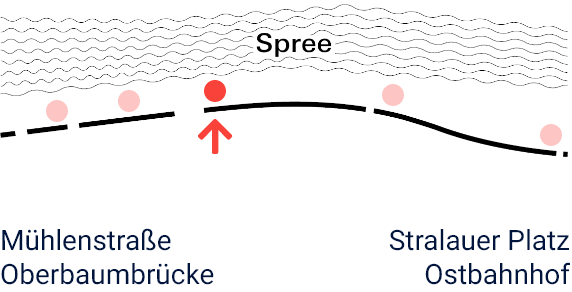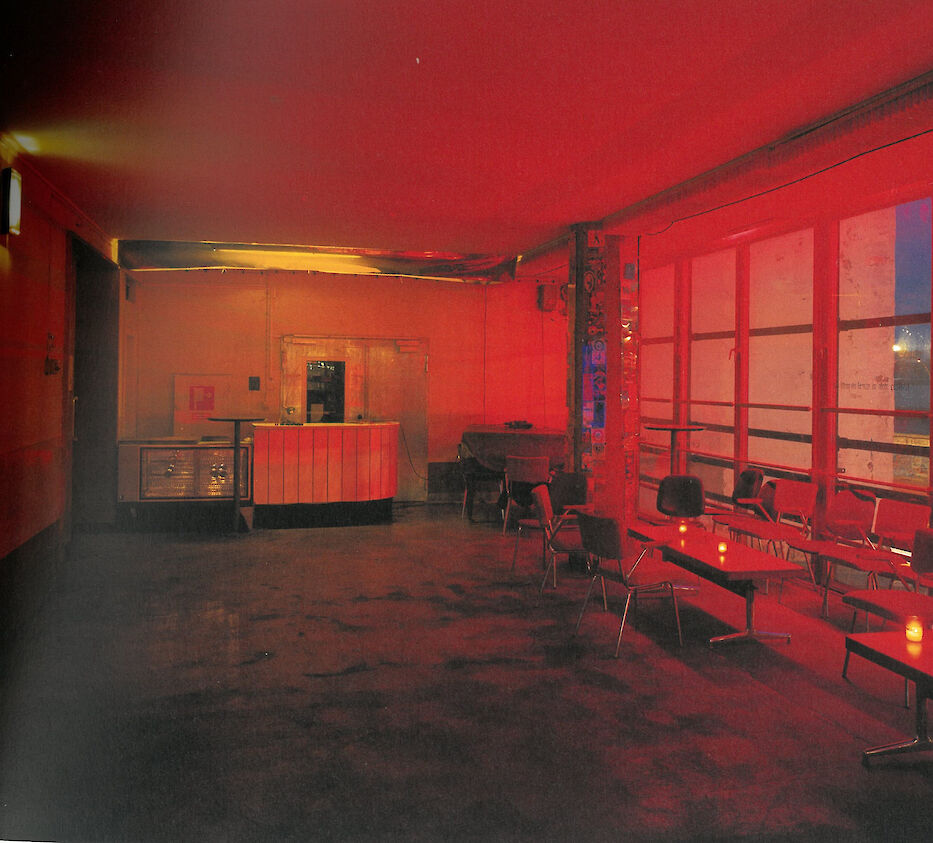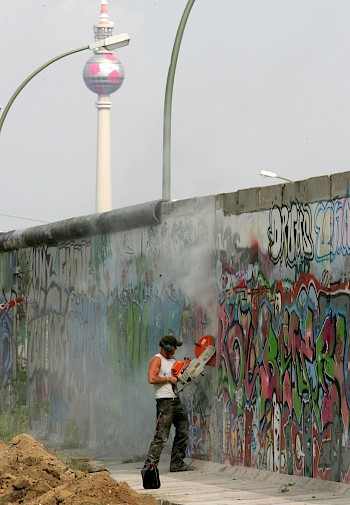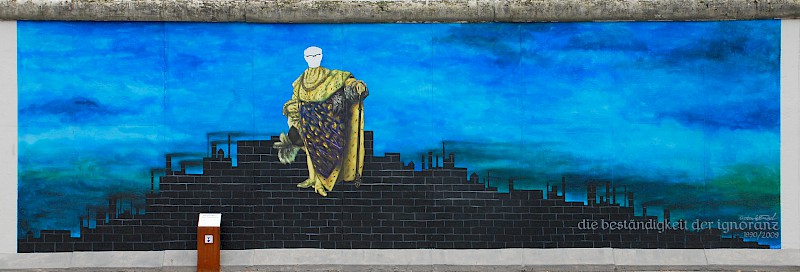1990
– 2013

In the 1990s and 2000s, Berlin had little money but lots of space. The area around Mühlenstraße was one of the newly empty spaces. Clubs such as Ostgut, Maria, Deli and later YAAM emerged in the area’s disused industrial halls. Young people from all over the world set up home in construction trailers on the empty border strip behind the East Side Gallery. Later the vacant plots were gradually sold. The alternative trailer camps, known as Wagenburgen, were dissolved, and the clubs forced to move.
"Straight after the Wall fell, anything was possible."
Techno was the music of the generation to whom anything seemed possible when the Berlin Wall came down. The club Ostgut, in a disused hall on Mühlenstraße, opened its doors in 1998. Here, clubbers could feel free to enjoy life to the full, whatever their sexual orientation, appearance, or background. When the grounds were sold to the Anschutz Entertainment Group, Ostgut was forced to move. Its successor is still going strong just a few streets away: Berghain still plays techno and is now world famous.
"The fall of the Wall kick-started techno in Berlin."


The question of whether to preserve the East Side Gallery was much debated from 1990 onwards. To the Berlin Monument Authority, it was historically significant; as far as the urban planners were concerned, it stood in the way of development along the riverbank. After many years of negotiations, it was agreed to let the Gallery stay — on condition that some gaps were made in it. The first plots of land were sold in 2001. Parts of the Wall were moved to make way for access roads to the new buildings. In 2009 the district Friedrichshain-Kreuzberg and the state of Berlin paid over two million Euros to have the East Side Gallery restored and ensure its long-term survival. Since 2018, it has been run by the Berlin Wall Foundation.

East Berlin artist Karsten Wenzel recalled two indifferent rulers with his painting of 1990: Louis XVI of France, who was executed during the French Revolution, and Erich Honecker, Chairman of the State Council of the GDR. They both ignored the dissatisfaction of their people. But the artist was also concerned to point out that we all show disregard to some extent — with reliable persistence.